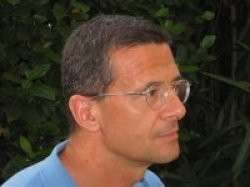Nouvelle approche de la mesure des distances culturelles Nouveau site de l‘UIESP : N-IUSSP
Présenté par Gustavo De Santis (DiSIA Dip. di Statistica, Informatica, Applicazioni "G. Parenti", Université de Florence) ; Discutante : France Guérin-Pace (Ined)
Nouveau site de l’UIESP: N-IUSSP
Gustavo De Santis présentera un nouveau site Internet de l’UIESP pour diffuser les résultats de la recherche démographique : N-IUSSP.
Gustavo De Santis et Massimo Mucciardi (Un. de Messina) : Une nouvelle approche de la mesure des distances culturelles
Présentation en Français
This presentation combines two distinct strands of research. One is the (recently proposed) DBS-EM method, or Distance Between Strata estimated with the EM (Expectation Maximization) algorithm, typically, albeit not necessarily, on cultural data. The method permits researchers to measure how close to, or far from, each other any two subsets of observations (or strata) are, relative to the average distance observed within the whole sample. When the strata are formed on the basis of supposedly meaningful variables (e.g., age or region of residence) the method tells whether these variables actually characterize, and thereby differentiate, observations. With a proper, repeated set of observations, the stratification variables can be age, period and cohort, i.e., an APC model. These models have long attracted scholars, and frustrated them, because of the intrinsic collinearity problem (C=P-A). We show that, within the limits imposed by the DBS-EM method, the collinearity problem of the APC models disappears, and, with proper data, the relative importance of the three dimensions (age, period and cohort) can be easily assessed - an absolute novelty in this field. In our application on Italian data over the years 1993-2013, age and cohort strongly shape cultural attitudes, while cohort and period have some impact on political orientations.
Gustavo De Santis

Gustavo De Santis est professeur de Démographie au Département de Statistiques de l’Université de Florence. Il est membre des associations majeures de démographes, italiennes et internationales.- Depuis Nov. 2015 – Rédacteur en chef de N-IUSSP (www.niussp.org)- 2015-2017: Vice-président de l’AISP (Italian Association for the Study of population).- Depuis Janvier 2014: Représentant italien à la Commission de la population et du développement des Nations Unies (New York).- Depuis avril 2010: Président du Conseil Scientifique de l’INED (Paris), et depuis 2012, Membre du Conseil scientifique d’IPOPs.- Depuis février 2010: Co-directeur de la Florence School on Euro-Mediterranean Migration and Development, organisée par l’université de Florence et le Robert Schuman Centre for Advanced Studies au European University Institute (Florence).- Depuis 2007 - Organisateur (actuellement: President) du site Internet "Neodemos" (www.neodemos.it).
Quelques-unes de ses publications récentes :- avec SALINARI Giambattista (2015) “Earlier and more rapid ageing: does nutrition contribute?”, International Journal of Population Studies, vol 1, pp. 42-59 (DOI http://dx.doi.org/10.18063/IJPS.2015.01.005) (http://ijps.whioce.com/index.php/ijps/article/view/01005)- avec MALTAGLIATI Mauro et SALVINI Silvana (2015) “A measure of the cultural distance between countries”, Social Indicators Research, online first, pp. 23 (DOI 10.1007/s11205-015-0932-7) (http://link.springer.com/article/10.1007/s11205-015-0932-7),- avec MUCCIARDI Massimo (2015) “Cultural vs. objective distances: the DBS-EM approach”, Social Indicators Research, online first, pp. 16 (DOI 10.1007/s11205-015-1213-1) (http://link.springer.com/article/10.1007/s11205-015-1213-1)- avec SALINARI Giambattista (2015) “On the Beginning of Mortality Acceleration”, Demography, Volume 52 (1), Page 39-60. DOI: 10.1007/s13524-014-0363-0.
